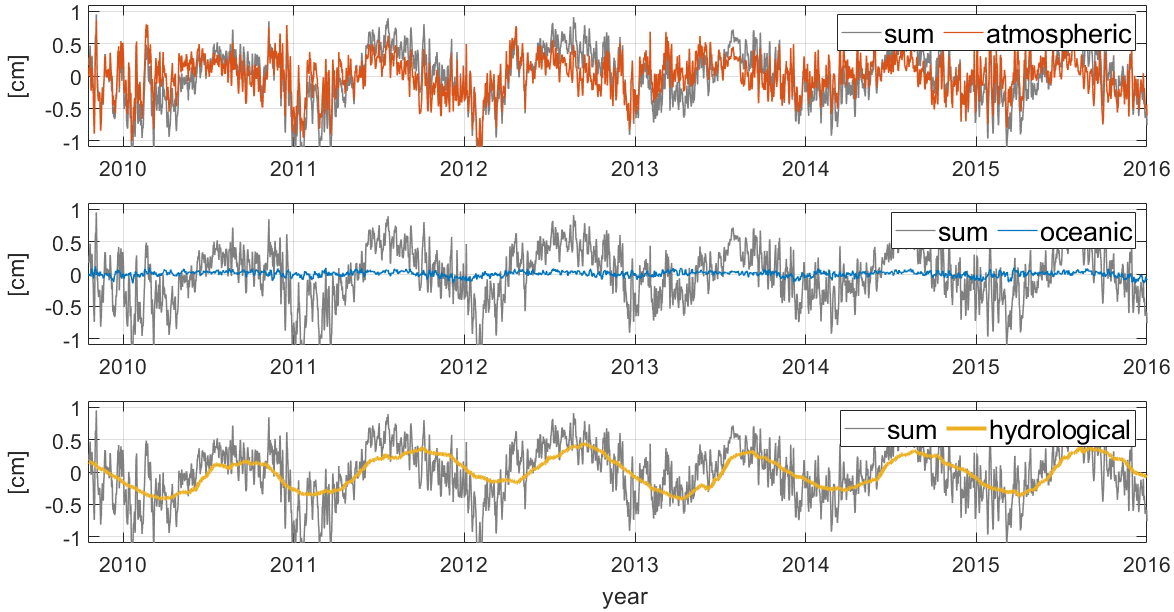Improved parameters of geodetic VLBI by correcting for all types of non-tidal loading

Very Long Baseline Interferometry (VLBI) is a geodetic space technique which measures the difference in arrival times (delay) of extra-galactic radio signals at separate antennas across the Earth. It depends on the distances between each two antennas, the so-called “baselines”. The observed delays allow for estimating the absolute positions of the antennas in the terrestrial reference frame (TRF), the positions of the radio sources in the celestial reference frame (CRF), as well as the complete set of Earth Orientation Parameters (EOP), linking TRF and CRF.
The positions of the antennas vary during VLBI measurements, and the instantaneous displacements with respect to the long-term linear motion as provided by the TRF are generated from different geophysical effects. One such effect is the deformation of the Earth surface by non-tidal loading, driven by the redistribution of air and water masses within the atmosphere, ocean and continental hydrolosphere. However, oceanic and hydrological loading are usually omitted in routine VLBI processing. In the recent study Benefits of non-tidal loading applied at distinct levels in VLBI analysis (Journal of Geodesy, 2020, doi: 10.1007/s00190-020-01418-z, [PDF]), researchers of DGFI-TUM applied all three non-tidal loading types in the analysis of VLBI sessions between 1984 and 2017 and investigated the impact for various geodetic parameters.
Loading data in terms of three-dimensional station site displacements was applied at two distinct levels of the parameter estimation process: The “observation level” represents the rigorous application, while only average site displacements are considered in the approximation at the “normal equation level”. The study revealed that each baseline is most sensitive to a different loading type (Figure). Considering all types jointly provides the best results, as the variation in estimated heights decreases to a larger extent and for more stations than with any of the single loading types. In particular, the inclusion of hydrological loading leads to a significant reduction in the annual residual signal of station heights. These effects, which improve the stability of station positions, were observed for both application levels with a similar magnitude, and hence the correction for non-tidal loading at normal equation level proved to be a suitable approximation in VLBI analysis.
Arcisstraße 21
80333 München